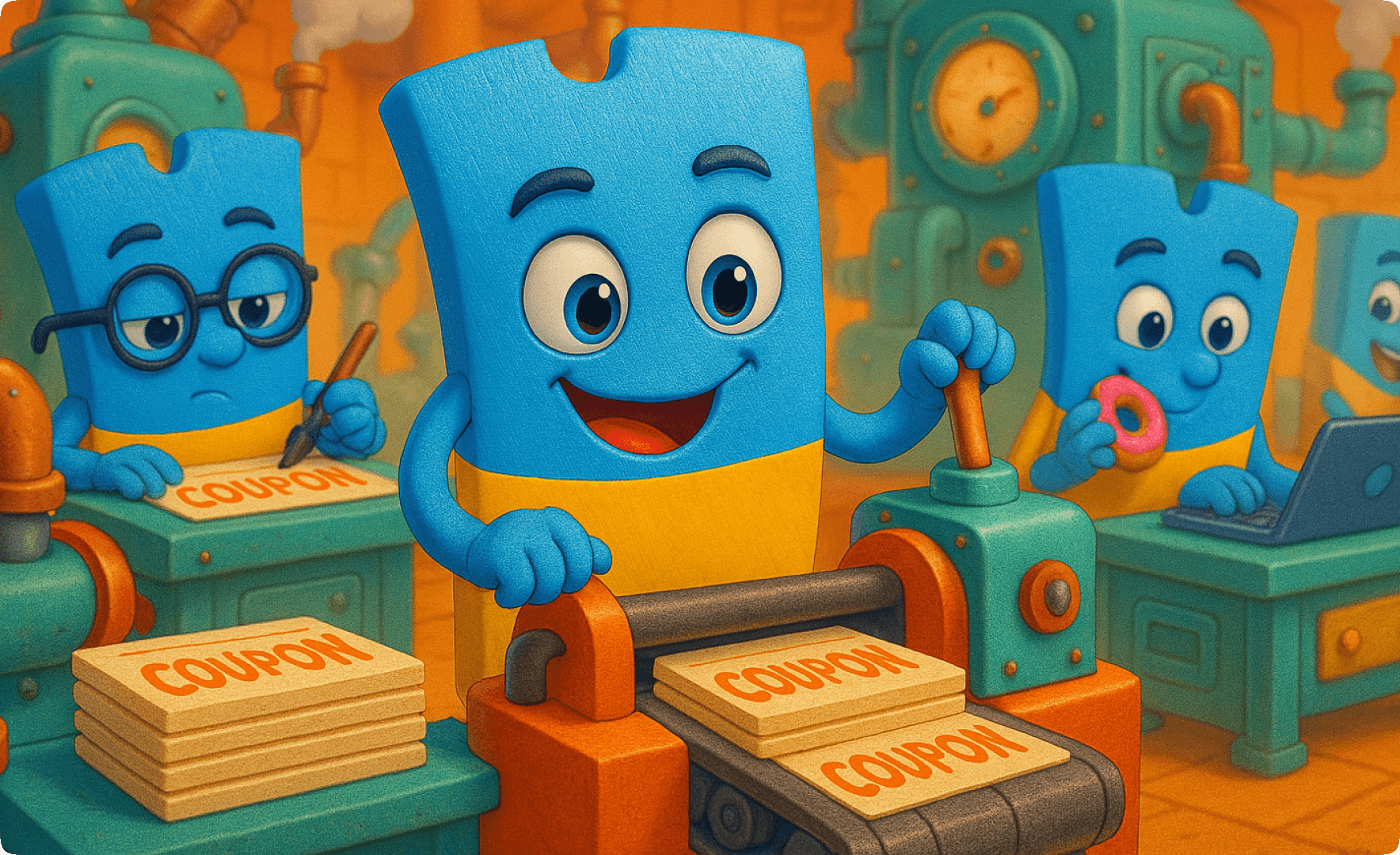Using Gamification to Boost Customer Loyalty

Traditional loyalty programs are facing a challenge. Despite their widespread use, many are underperforming “thanks” to limited engagement, the lack of clearly highlighted value, or personalization. What usually happens is that customers sign up, collect a few points, and then they forget the program exists.
So, what can be done to change it? To put it shortly, you can boost loyalty with gamification.
Businesses can transform loyalty programs into genuinely rewarding, behavior-driven experiences by adding gamification mechanics. This approach is known to encourage participation, but it does more than that, it fosters repeat behavior and emotional connection.
In this article, we’ll explore the potential of gamification in loyalty programs, the benefits it offers, and how Winday helps implement gamified elements in loyalty programs. You’ll learn:
- What gamification in loyalty programs means and how it works.
- Benefits of gamified loyalty programs across customer engagement, retention, and revenue.
- Which gamification techniques drive customer behavior?
- How Winday helps businesses boost loyalty through gamified campaigns.
What Is Gamification in Loyalty Programs?
Gamification in loyalty programs is the use of game-inspired elements to encourage customer participation and improve engagement with a brand. These can be points, leaderboards, tiers, badges, or challenges. These elements are familiar from games, but here they’re used in the context of loyalty programs.
The main idea of this approach is to apply psychological principles found in gaming. People are hardwired to be drawn to interactive and playful experiences, and if they see a chance to explore it in new circumstances, they are likely to give it a try. All these elements are part of what makes gaming so addictive.
If brands add progress tracking, rewards, and social recognition to non-gaming contexts, they make them instantly more interesting and interactive. And, what is also important, fun. Another reason why traditional loyalty programs fail is that they no longer offer an element of fun.
People have an endless variety of choices when it comes to interactive experiences, and marketing is becoming increasingly gamified. In fact, brands implementing gamification see increased engagement (47%), brand loyalty (22%), and brand awareness (15%) according to Antavo.
These numbers show how gamification trends loyalty marketers follow are reshaping the way brands build long-term relationships with customers.

The chart illustrates a positive correlation between gamification intensity and brand loyalty.
In its essence, gamification is a behavioral design tool. It creates a sense of purpose by using motivation, goal-setting, and reward anticipation. All three are powerful drivers of human behavior in general.
Top Benefits of Gamification in Customer Loyalty
Gamification may seem just like a modern tool to make the customer experience more engaging. While that’s true, there are more strategic benefits to it.
First of all, gamification affects brand awareness. People simply remember and talk about brands that are fun to interact with. Besides, if you provide a memorable and interactive experience, your audience will likely share it with others.
Moreover, gamified systems go beyond simple rewards. They drive behavioral insights that help brands create future strategies and affect business growth in the long run. Finally, loyalty gamification has become one of the most effective ways to connect traditional loyalty programs with the expectations of modern consumers.

Gamified loyalty programs often work as a cycle. First, users are encouraged to take actions like purchases or referrals. Then, they earn badges and rewards, which boost engagement and motivate them to keep participating.
Increased Customer Engagement & Participation
Traditional loyalty programs mostly provide passive experiences. What does it mean? The typical cycle of interactions doesn’t motivate customers to return. They make purchases, earn points, and occasionally redeem them. And… that’s all! Gamification, on the other hand, changes this dynamic by encouraging continuous interaction and return. In other words, they’re no longer passive members, but active participants who can affect something.
For example, in gamified loyalty programs, customers have a wide range of activities to return to:
- Complete daily or weekly challenges
- Earn points for non-purchase actions (e.g., writing a review, watching a video)
- Compete or collaborate with other participants
- Collect digital rewards and status upgrades
- Receive surprise rewards
You can see how this approach differs from a traditional one. All the incentives here are designed to add a layer of interactiveness and make people return. Engagement frequency, therefore, increases due to the simple fact that users feel an urge to come back for more.
With progress motivators (progress bars, countdowns, “play till”), there is more to check for users. It is a simple urge – “Where am I in this?” that comes from a natural curiosity.
An excellent example of gamification in a loyalty program is Xbox’s integration of Microsoft Rewards into its Game Pass subscription service. The program allows Xbox Game Pass Ultimate and PC Game Pass members to earn loyalty points simply by playing games, which is an amazing idea since it is a core activity for their user base.
On the surface, this approach rewards engagement. But at its core, it creates a loop where users are motivated to return again and again.
Members can access a set of “Quests,” which are small challenges tied to the Game Pass catalog. The Quests vary widely, so there’s something for everyone. For example, that could be “login on specific days,” “try new titles,” or “complete tasks within certain games.” Each completed Quest earns Microsoft Rewards points.
After completing a Quest, users receive a notification and can claim their points. They can then be redeemed for a range of rewards – Xbox Gift Cards, in-game content, full games, or even charitable donations. As you see, they are all very tangible and actually valuable for Xbox’s audience.
This is a perfect example of a system that mixes gameplay with a very well-structured reward mechanism. It turns routine interaction with the platform into a new, adrenaline-driven experience. Otherwise, these could be just basic actions, but within the loyalty program, they are trackable challenges.
Another important advantage is simple, Xbox encourages consistent use and exploration of its game library. In the process, they also build customer loyalty.

Xbox’s loyalty program page.
Higher Retention & Brand Loyalty
One of the strongest effects of gamification is long-term customer retention and loyalty. A smart gamification system doesn’t offer one-time rewards, but provides habitual engagement. That’s why gamification techniques in loyalty programs often include emotional triggers. We know all of them well from the gaming world. Through a carefully created chain of levels and rewards, businesses allow their audience to stay connected to them over time.
The key tactic is the use of tiered levels, such as silver, gold, and platinum. They give customers a feeling of progression and a sense of gaining status within the loyalty system. As users unlock new tiers, they gain access to better rewards or exclusive experiences, which strengthens their commitment to the brand.

Samsung’s tiered loyalty program and the benefits each tier represents.
At first glance, it might seem like it stimulates spending more time. However, it actually taps into the psychological need for achievement and recognition. Plus, there’s a sense of sunk investment you’re unlikely to walk away from. In other words, if you have progressed and leveled up, you want to come back and finish it. Each action brings users closer to a goal, and when that goal is tied to a reward or a new level, the motivation to return increases naturally.
Think of how mobile games keep people hooked with weekly events or limited-time achievements. It’s the same principle applied to loyalty programs. The sense of “I’m almost there” becomes a psychological anchor. You don’t want to miss a day because that might set you back. You’ve put in the effort, and now you’re emotionally committed.
This emotional attachment is what turns regular customers into brand loyalists. Why? Because over time, this habitual interaction leads to something deeper: customers begin to identify with the brand. It’s no longer what can be called a transactional relationship, but a personal one. That’s the real win of gamification if you think about it. Higher engagement metrics, yes, but also a brand people care about and keep coming back to.
Interestingly, a framework based on Self‑Determination Theory connects game mechanics to emotional loyalty.

This diagram shows the conceptual framework for how gamification elements influence brand loyalty.
🔝 Useful Tip:
Introduce tiered progression (for example, Silver, Gold, and Platinum) into your loyalty program. Brands that implement tiers statistically see up to a 30% increase in customer retention.
Higher Social Interactions and Sharing
Think about the games you played as a kid. At least some of them, if not all, were causing competition and collaboration. And most likely, a lot of talk around them. Believe it or not, gamification in marketing works the same way.
One of the biggest advantages of loyalty gamification is how it makes interactive actions into social currency. Gamified loyalty programs easily grab attention. And when customers start sharing their wins, it fuels a cycle of visibility and peer-driven motivation.
Leaderboards, team challenges, and public achievements are classic gamification techniques in loyalty programs. They encourage friendly competition and motivate people to come back to…defend their rank or outperform their peers! This is one of the most effective gamification trends in loyalty today: leveraging social dynamics to drive deeper engagement.
Among the most important loyalty gamification tips is this one: add shareability of achievements.
They trigger a ripple effect. Every social post, story, or invite becomes a piece of organic marketing. It attracts new users and keeps existing ones engaged. This is how gamification in loyalty programs can unlock viral loops and word-of-mouth growth.
Some programs even offer rewards for social actions. Share a milestone? Invite a friend? Get bonus XP or early access to unlockable content. It’s a simple way to boost loyalty with gamification and grow your brand network.
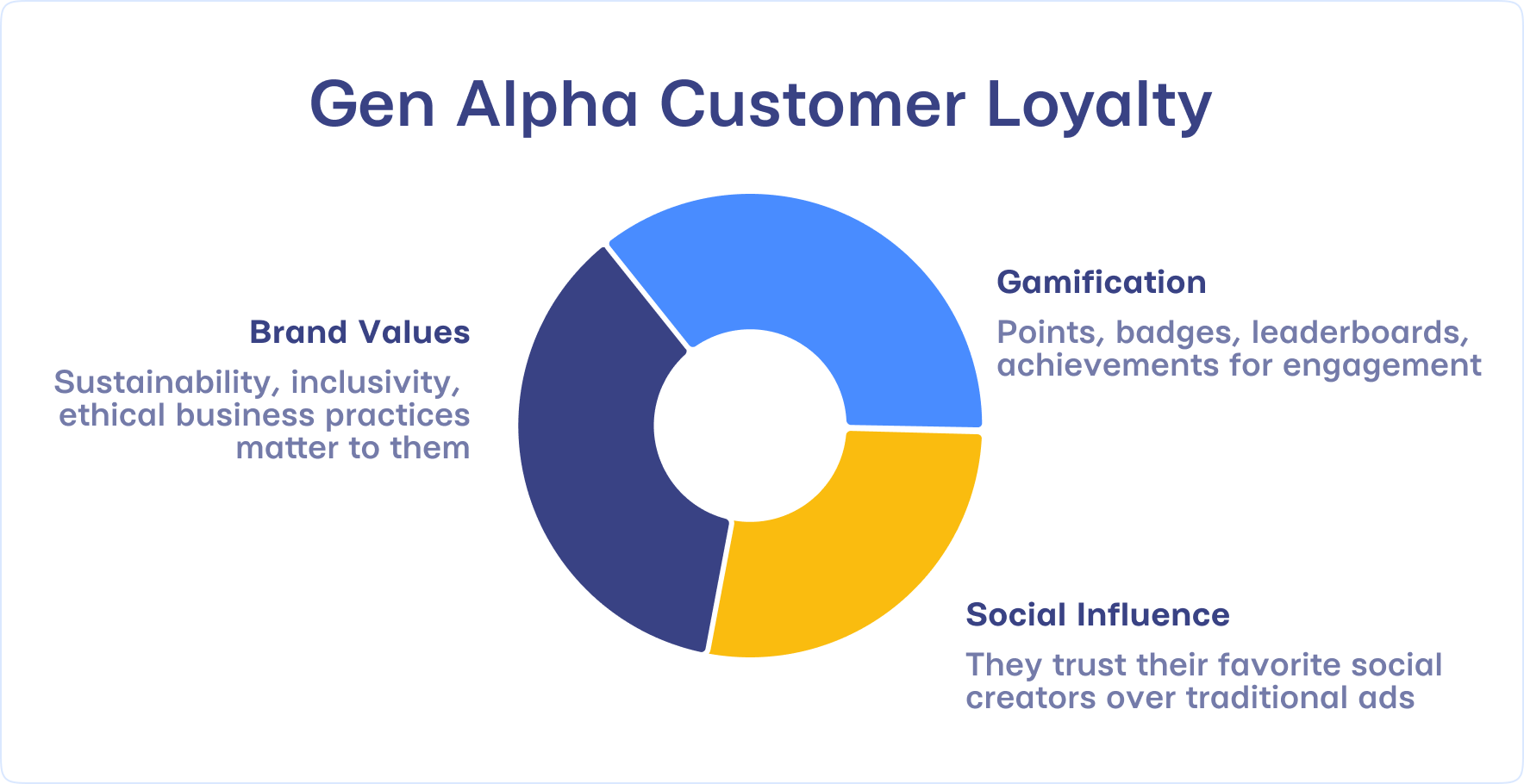
Better Data on Customer Preferences
Game actions reveal user behavior, preferences, and motivations. In fact, gamified loyalty programs track rich interaction patterns. Are users more active during time-limited challenges? Do they prefer leaderboards or long-term quests? Which rewards get claimed fastest? These patterns help you understand your audience far beyond basic demographics.
Winday provides campaign analytics to optimize your campaigns based on this data. Our gamification analytics tools show which campaigns are working, who your top users are, and where drop-offs happen. Based on this information, you can adjust your program. That’s a huge upgrade over static programs.

The Winday’s General Analytics page. It allows the brand user to see total statistics for all Instant Games and Tournament Games.
🔝 Useful Tip:
Treat every user interaction like feedback and act on it accordingly.
Higher ROI & Revenue Growth
Increased purchase frequency is one of the first wins of implementing loyalty gamification. When there’s a countdown clock or a new challenge to complete, customers come back to check it. For many businesses, it is a great chance to get more value from their initial offering and introduce up-selling or cross-selling opportunities.
Basket size growth is another benefit. When rewards are tied to BOGO deals, such as “Buy one, get one 50% off,” customers are encouraged to add more items to their cart to get the benefit.
Over time, customer lifetime value increases. Users who engage with gamified loyalty programs are more emotionally invested and less likely to churn. In essence, they’re on a journey with your brand.
For example, Starbucks used customer loyalty gamification to boost both revenue and retention. Their star-based system, allowing customers to redeem stars for rewards, helped it achieve double-digit increases in average spend per user.

Starbucks’ benefits for loyalty members.
🔝 Useful Tip:
Add exclusive benefits per tier (e.g., early access, free shipping). This helps boost loyalty using gamification techniques that are simple and easy to understand.
What Gamification Techniques You Can Use
The number of gamification techniques for loyalty programs is huge and you can experiment with all of them. Not all of them might be perfect for you, though. Some should be used in a specific phase of your brand’s growth, or when you need to achieve a particular effect. Let’s take a look at the most interesting gamification trends for loyalty programs.
Point-Based Rewards & Milestones
- How it works: Users earn points for specific actions. These can be purchases, sign-ups, or referrals. In turn, points can be redeemed for all kinds of benefits depending on the brand. Usually, customers get discounts, gifts, or exclusive access to some special perks. It is one of the classic loyalty gamification tips that works across industries.
- When to use: If your aim is to drive frequent, repeatable actions and quick-win incentives, this approach works best.
- Why it works: It’s familiar and fast, but also highly motivating. It is psychologically pleasing to see your capital rising, even if it is points that stack up. The closeness to a reward only amplifies it.
- Tip: Add milestone rewards at key thresholds (like 100, 500, or 1000 points) to keep the momentum going and prevent drop-off after early wins.

Happy Feet Footwear’s point-based reward system.
Challenges, Quizzes & Tasks
- How it works: Give users themed mini-missions and reward them with bonuses, badges, or exclusive deals. They can be anything that works for your business, for example, such as “Buy three times in seven days”, or “Refer 2 friends this month”.
- When to use: Perfect for introducing new products, promoting features, or shifting customer behavior.
- Why it works: It adds structure and surprise while educating customers about new offerings. Increases time spent with the brand and makes the engagement with it more purposeful.
- Tip: Rotate in seasonal or limited-time challenges, for example, during summer holidays or with a New Year’s discovery quest.
Badges & Achievement Systems
- How it works: Customers receive digital badges or achievement icons for completing very specific actions. Examples include a first purchase, five referrals, or writing a product review.
- When to use: If you are looking to reinforce status, create collection behavior, and give users visible signs of progress, this should be your choice.
- Why it works: People love trophies and anything that visibly reflects their achievements. Badges, even in gamified form, make simple actions moments of pride, and users will keep engaging to collect them all.
- Tip: Show a badge progress tracker on the user profile and create some secret badges to make people curious. This is one of the best practices in customer loyalty gamification.
Leaderboards & Competition
- How it works: Users earn a spot on ranked lists based on performance. These could be the most points, the most referrals, the highest purchases.
- When to use: Best for building community engagement and short-term campaigns.
- Why it works: Competitiveness is a strong motivator. Public rankings push people to do more, especially if there’s a reward or recognition at the top.
- Tip: Reset the leaderboard weekly or monthly to give newcomers a fair shot. At the same time, top players will be challenged to defend their position.
Flash Instant Games and Challenging Tournaments
- How it works: Quick games or timed tournaments that can appear in emails, apps, or on-site popups. They are very simple – spin-to-win, scratch cards, or trivia.
- When to use: If you are planning product launches, re-engagement campaigns, or seasonal traffic spikes, adding flash instant games might be one of the best loyalty gamification tips.
- Why it works: Instant gratification combined with dopamine-driven fun. These games create buzz, they usually affect session time, and, as a result, drive repeat visits.
- Tip: Link game outcomes to real rewards. For example, discount codes, freebies, or surprise prizes. It will help you to turn them into conversions.
Tiered Levels & Progress Bars
- How it works: Users progress through loyalty levels (Bronze → Silver → Gold) when they complete a chain of actions. They can also earn points, unlocking better rewards along the way.
- When to use: Best used when your goal is long-term engagement and lifecycle marketing.
- Why it works: It introduces a sense of status and momentum. Customers work harder when they know they’re leveling up, and they keep staying with a brand to maintain their perks.
- Tip: Always display a visible progress bar and list the benefits of each tier to keep people motivated.
How to Improve Loyalty through Gamification by Using Winday
Winday offers a unique way to gamify your loyalty program. Businesses can launch branded tournaments that use the best gamification techniques loyalty programs thrive on (mentioned earlier points and milestones), with traditional gaming elements (leaderboards and real-time competition). In these tournaments, the reward goes not only for buying, but for playing, engaging, and coming back.

One of the steps of creating a game on Winday.
How to set up gamified loyalty campaigns with Winday:
- Choose “Create game”. In Winday’s dashboard, access the “create game” option.
- Set up the game. Here, you need to set up game mechanics, gameplay balance, and skin palettes.
- Create start and end screens for the game. It is important to set the tone of the experience, so add here an informative and engaging message to simply interest people.
- Add discount codes. You can create new codes on Winday or upload pre-existing ones.
- Decide on a campaign duration. Choose the conditions and time of the tournament.
- Review your setup and publish the game.
In fact, if you’re looking to create a custom game to boost loyalty, Winday can help you do it for a fraction of the cost of traditional development.
Unlike a classic loyalty program, a tournament adds something much more powerful: competition. Of course, there is excitement in climbing the leaderboard, tension when you’re close to the top, and a rush of pride when you win. If you think about it, even defeat leaves a memorable trace because you’ve experienced something interesting. Customer loyalty gamification brings victory, anticipation, and rivalry that aren’t very typical of traditional loyalty programs. Winday tournaments place them at the center of the experience.
This is a great example of how gamification trends loyalty programs adopt are shifting toward more emotionally immersive formats, such as flash games or tournaments. And the more emotionally involved users are, the stronger their connection to your brand.
💡 Did You Know?
Over 80% of Millennials say they’re more loyal to brands that offer rewards that feel like games.
Trends & Tips to Add Gamification
If you add gamification to your loyalty program, you’re not reinventing the wheel or taking a major risk. In fact, you are using psychology-backed tactics that customers already enjoy. Below are proven strategies to create simple, engaging, and high-performing gamified loyalty experiences.
Keep simple and well-known games and mechanics
When it comes to customer loyalty gamification, simplicity works amazingly well. It is important not to overdo it. The more familiar the game mechanics, the faster users jump in and engage. That means using classic formats like point collection, spin-the-wheel, progress bars, and scratch cards is the best decision. People are already familiar with them, and this factor plays a huge role. They can start without reading long instructions or complex rules.
Avoid complicated game concepts that require too much effort to figure out. The goal is to make the experience as frictionless as possible. For example, widely popular casual game formats will work perfectly. Match‑3, bubble shooter, or match‑2 puzzles have already trained millions of users. Why not use them?
Winday supports many of these intuitive gamification techniques, loyalty marketers often use.
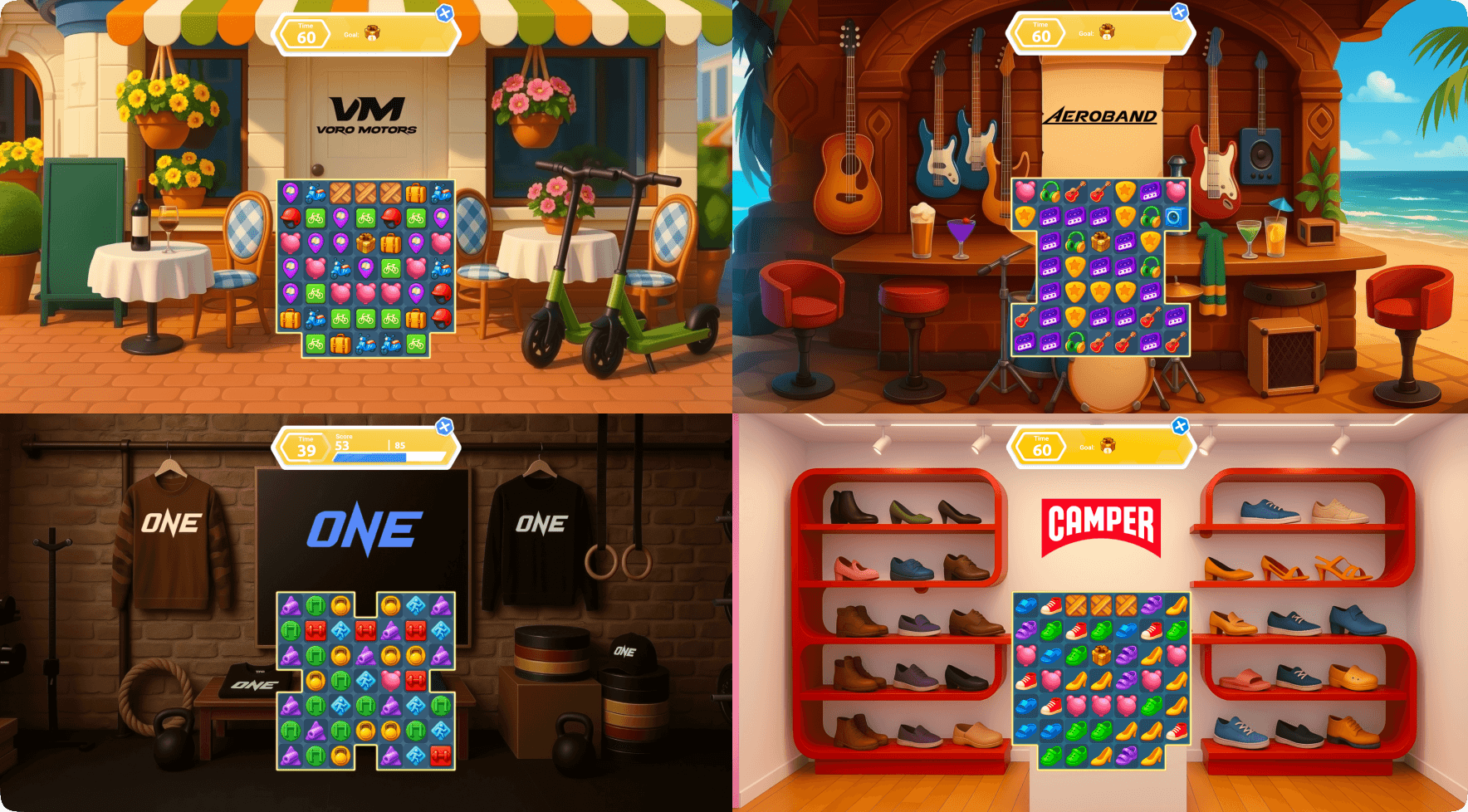
Examples of a Match3 games created and launched on Winday.
Social media to share success and promote the new game
We live in the era of social media, so it is a good idea to use it when it comes to gamification, too. Prompt users to share their wins. They may repost a new badge, showing how they climbed further in the leaderboard, etc.
You can offer bonus points for sharing, referring friends, or just tagging others in game-related posts. Simplify the whole process for your users, provide pre-built visuals. These could be achievement cards or quiz results that look great on stories or feeds.
That’s social proof that drives virality and pulls new users into the experience. For many users, such rewards are fun to compete for.
Add personalized challenges, badges, and achievements
Nothing hits these days like personalization. In a way, it is hard to expect loyalty when you treat everyone with the same generic approach. People expect a personalized approach, and they want experiences to be tailored to their behavior and preferences.
With Winday, you can build rule-based targeting to personalize challenges and badges based on user behavior. As we mentioned before, you can access data on the dashboard in the analytics section.
But what should you implement here? For example, if a user mostly buys coffee, prompt them with a “Coffee Connoisseur” challenge. If they shop in the first half of the day, reward them with an “Early Bird Shopper” badge or something similar. People like to identify themes with these things, even if they know it’s just a label. These personal touches create relevance and recognition, two key drivers of long-term engagement.
💡 Did You Know?
McDonald’s “Monopoly” campaign, which was launched in 1987, is one of the longest-running and most successful gamified promotions in history. It used game boards, rare tokens, and prizes to drive repeat purchases and massive customer excitement.
Create content with seasonal or surprise elements
Gamification shines the most brightly when there is momentum. It works well in seasonal campaigns for Easter, summer holidays, or a classic holiday countdown.
What can you do to make gamification work even better here?
- Add countdown timers
- Launch teaser emails
- Create and post themed visuals for anticipation
It is always a good idea to add surprise bonuses, such as “Congrats, you’ve just unlocked a mystery reward!” once a user completes a milestone.
In general, limited-time, themed content gives users a reason to re-engage regularly throughout the year. It is a very practical way to boost loyalty with gamification.

NorgesEnergi, one of Norway’s top electricity providers, ran a seasonal quiz mixing Easter trivia with energy-saving tips. As a prize, they offered a chance to win one month of free electricity.
Monitor and analyze key metrics and customer Data
Launching a game or a tournament is always a first step. The value that comes after it depends a lot on how you analyze performance and optimize based on it.
It is important to track key metrics: bounce or engagement rates, average session length, conversion rates, and reward redemptions. A/B testing can show the difference between different formats, visuals, and reward types. Maybe your audience prefers matches over bubble shooters, or smaller daily rewards over big monthly ones. The only way to learn it is through analyzing data. Nothing else will give you that level of precision.
Recognizing the importance of data analysis, Winday provides a full analytics dashboard with GA4 integration. With it, you can follow campaign funnels, tweak underperforming areas, and double down on what works best.
Final Takeaways
Gamification and loyalty are a pair that is simply made to go hand in hand. Its arsenal is wide for tapping into human psychology, and it makes people instantly interested in what your brand has to offer.

Gamified loyalty programs boost engagement, increase retention, and give customers more opportunities to genuinely enjoy interacting with your brand. It can matter if you are using simple spins or full-scale tournaments, but the key is to keep personal and purposeful.
Winday makes that possible without added complexity. It gives businesses a way to launch and manage these experiences with ease. You don’t need coding, there are no delays, just results.
Try all Winday features for FREE on our Free Plan. Create your first gamified loyalty campaign in minutes, and see what a more engaging customer experience can look like.
Rate this article
Keep Learning
How to Improve Customer Retention: Traditional Strategies and Gamification Approach
Every business seeks a way to make customers come back. What traditional retention strategies are there, and how can gamified tools like Winday games help? In this article, we break it all down.
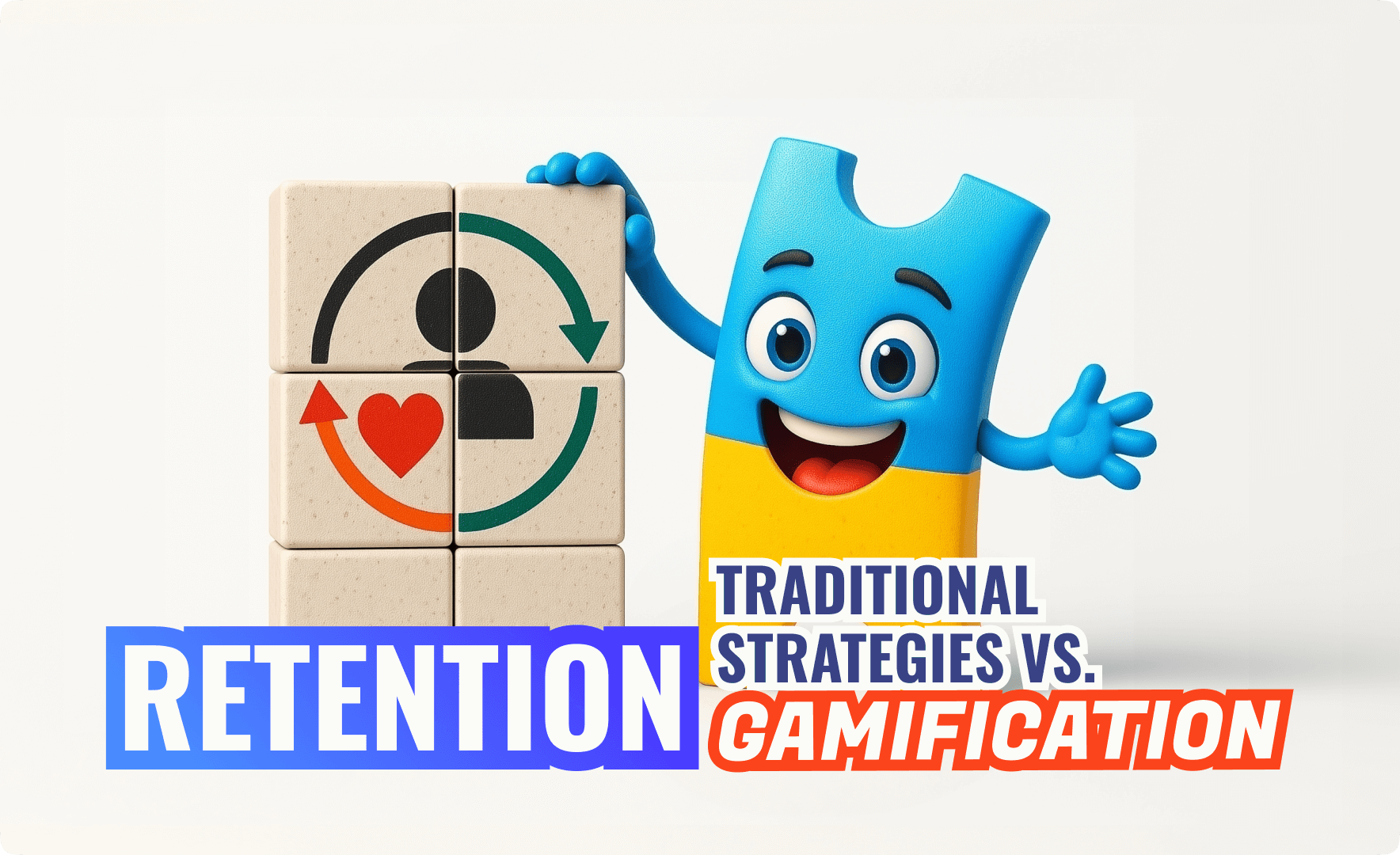
What is Brand Engagement and how to increase it with Gamification
What is brand engagement, and what is the role of gamification in it? In a this article, we explore brand engagement and how gamified elements can improve it in your business.
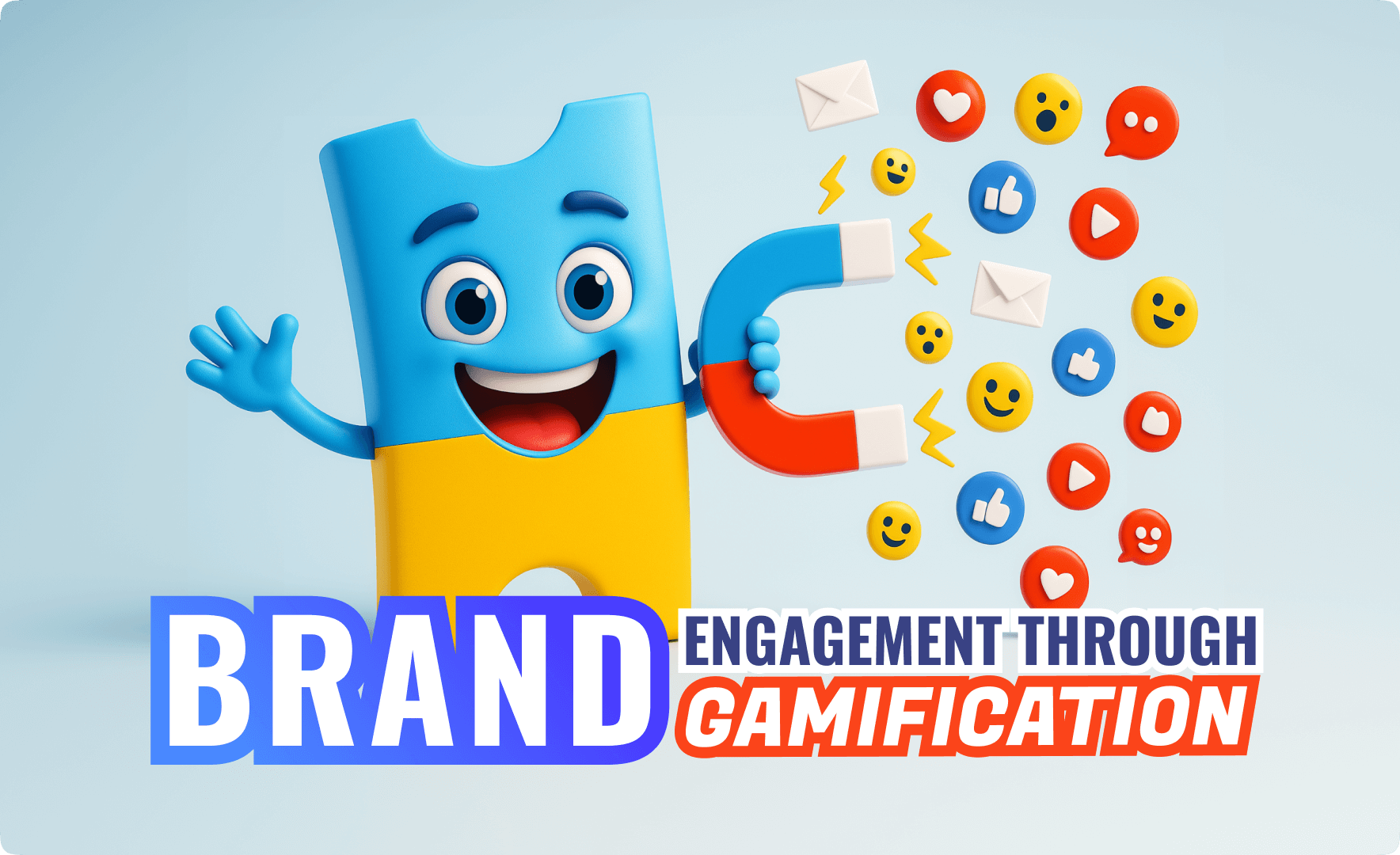
Customer Engagement in Coupon Marketing
Learn what coupon marketing is, what types of coupons fit best for your campaign, and how to boost your coupon campaign with gamification.
